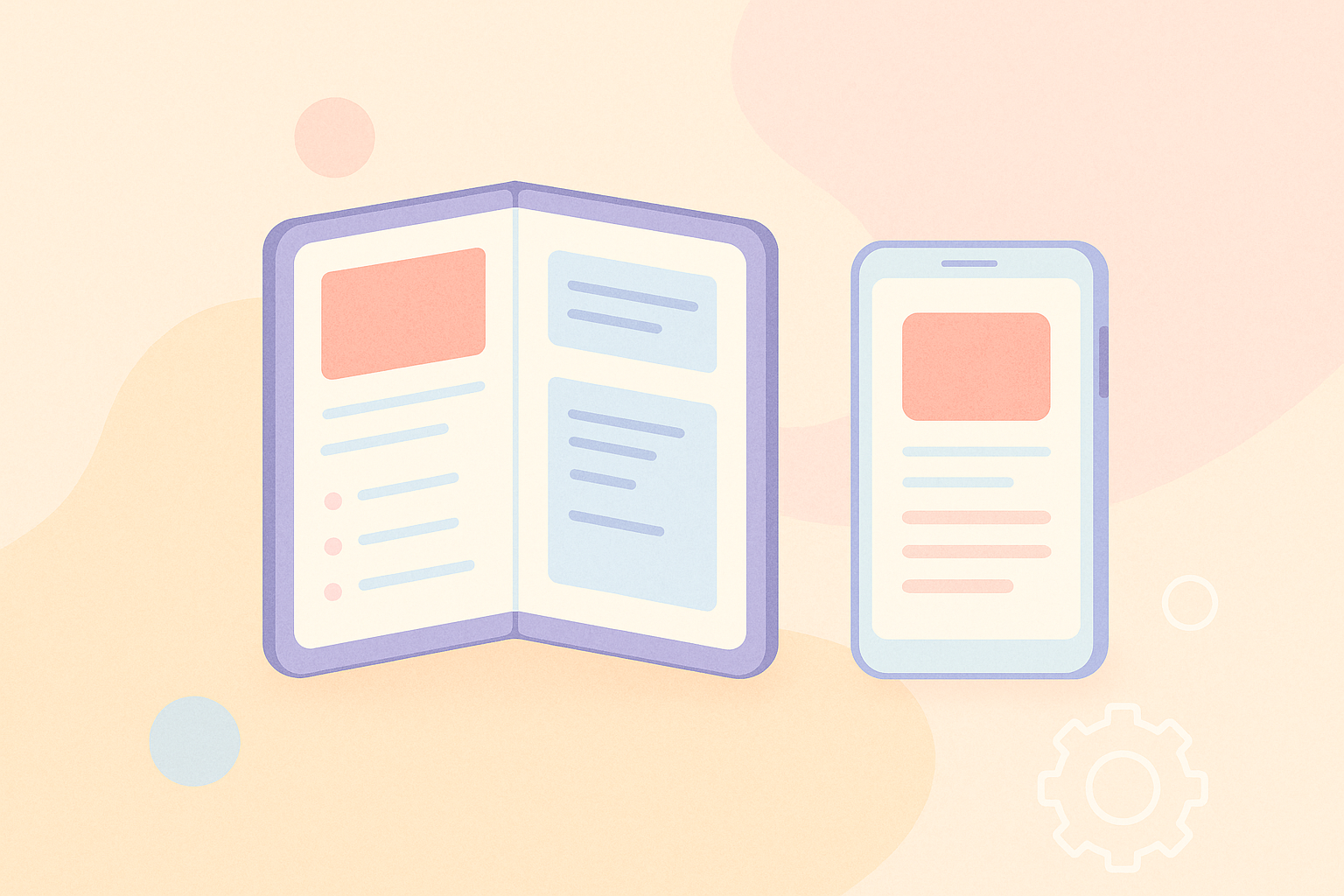The rise of foldable devices has brought a new era of innovation to the mobile technology industry. As smartphones and tablets with flexible displays become more common, designers and developers are challenged to rethink traditional mobile user interfaces (UI) and user experiences (UX). Unlike static rectangular screens, foldable devices introduce dynamic layouts, multi-screen configurations, and variable form factors that require adaptive and creative design solutions.
The Evolution of Foldable Devices
Foldable smartphones such as the Samsung Galaxy Z Fold series, Huawei Mate X, and Google Pixel Fold have shown that the future of mobile design is flexible—literally. These devices can transform from compact, phone-sized screens to tablet-like displays, offering more versatility in how users interact with apps. According to Android Authority, foldable devices are expected to grow rapidly in adoption as manufacturing costs decrease and software optimization improves.

As more users adopt foldable phones, UI/UX designers must anticipate unique challenges that come with dual displays, hinge mechanisms, and new interaction patterns. These challenges open exciting opportunities to redefine mobile experiences in ways that weren’t possible with standard smartphones.
Responsive Design Reimagined
One of the biggest impacts of foldable technology on mobile UI/UX design is the need for truly responsive interfaces. Traditional responsive design ensures that layouts adapt to different screen sizes, but foldables require interfaces that dynamically adjust to folding and unfolding transitions in real time.
For example, when a user unfolds a device, an app should transition smoothly from a single-pane layout to a dual-pane or expanded layout. This might mean splitting content into two columns, enlarging media previews, or displaying additional navigation elements. When folded back, the UI must seamlessly return to a compact state without losing context or usability.
Multi-Window and Continuity Experiences
Foldable devices often support multi-window multitasking, allowing users to run multiple apps side by side. This presents new design considerations for developers. Apps should be able to coexist within a shared screen environment without interfering with each other’s functionality or visual balance.
Continuity is another crucial factor. A user may start reading an article or editing a document on the smaller screen and then unfold the device for a more immersive view. This process should be seamless, with the content adjusting automatically to the new display configuration. Achieving this requires thoughtful UI transitions and consistent data persistence.
Design Challenges and Considerations
- Aspect Ratio Variability: Foldable devices often switch between drastically different aspect ratios. Designers must ensure that all UI components, from images to text containers, scale properly in both orientations.
- Hinge Awareness: The hinge area can create a physical separation or “crease” in the display. Designers should avoid placing key interactive elements in this zone to maintain usability and aesthetics.
- Touch and Gesture Adaptation: Foldable devices change how users hold and interact with screens. Gestures like swiping or pinching must remain intuitive across folded and unfolded modes.
- Battery and Performance: Larger, dual-screen configurations consume more resources. Lightweight design and performance optimization are essential for smooth experiences.
Opportunities for Innovation
Foldable technology doesn’t just challenge existing paradigms—it also unlocks new creative opportunities for designers and developers. For example:
- Enhanced Productivity Apps: Users can multitask more effectively, opening new use cases for productivity-focused apps such as document editors or project management tools.
- Immersive Gaming and Media: Games and video apps can utilize larger unfolded displays for a more immersive experience while maintaining portability.
- Adaptive Storytelling: Content-driven apps can design unique storytelling experiences that evolve as the user unfolds the device—transitioning from compact summaries to full-page narratives.
Best Practices for Foldable UI/UX Design
To create effective user interfaces for foldable devices, consider these design best practices:
- Plan for Layout Flexibility: Design multiple layout configurations—one for folded mode and one or more for unfolded states. Ensure smooth transitions between them.
- Embrace Adaptive Navigation: Navigation patterns may need to change depending on screen size. For example, a bottom navigation bar might become a sidebar in tablet mode.
- Design for Dual-Display Interaction: Consider how users interact with both screens—perhaps by dragging content from one side to another or using one screen as a control panel.
- Test Across Real Devices: Emulators can help, but real-world testing is vital to understand physical hinge behavior and user ergonomics.
- Maintain Consistency: Users should feel continuity across fold states, meaning animations, icons, and controls must stay familiar even as layouts change.
The Future of Foldable UX Design
As foldable devices continue to evolve, we can expect even more advanced form factors, including rollable and stretchable screens. These innovations will further blur the lines between mobile, tablet, and even desktop experiences. Designers who adapt early to these emerging technologies will have a significant advantage in delivering next-generation digital experiences.
Moreover, design tools and frameworks are catching up. Google’s Android platform now includes specific guidelines for foldable design in its Material Design documentation, and cross-platform frameworks like Flutter and React Native are starting to support foldable screen states.
Conclusion
The emergence of foldable devices is reshaping the future of mobile UI/UX design. It pushes designers to think beyond static layouts and develop adaptive, fluid, and context-aware interfaces. The key to success lies in embracing flexibility, optimizing performance, and delivering seamless transitions across all fold states.
For mobile designers and developers, foldable technology is not a challenge—it’s an invitation to innovate.

